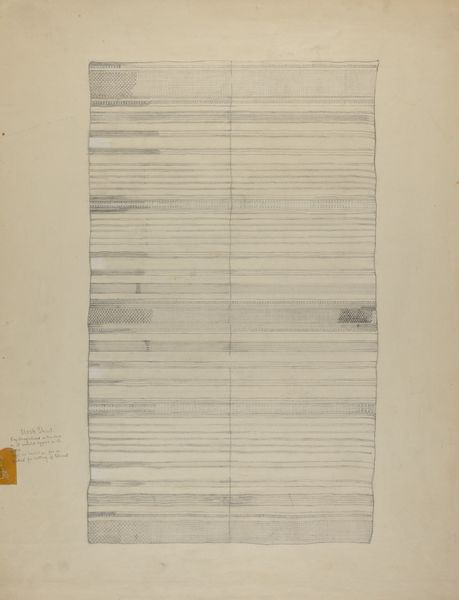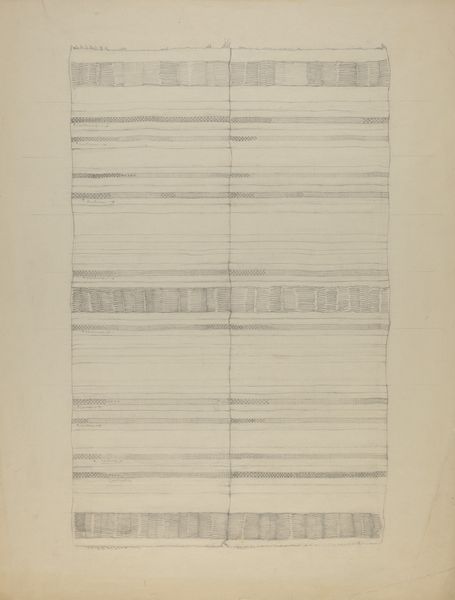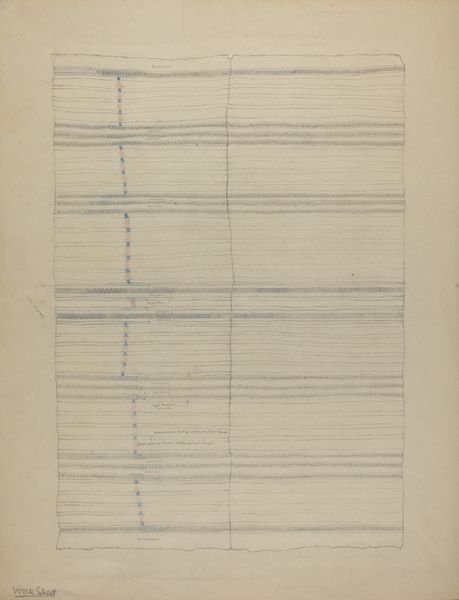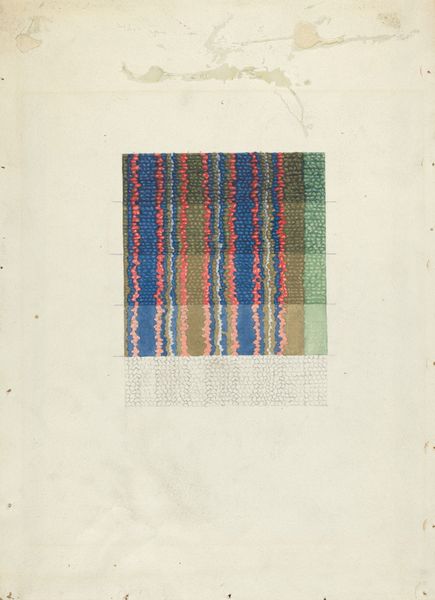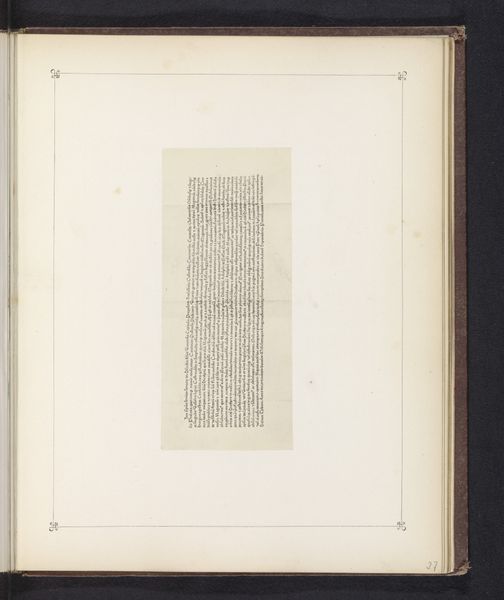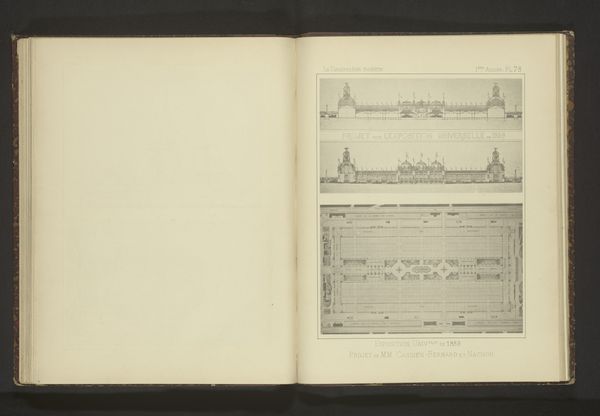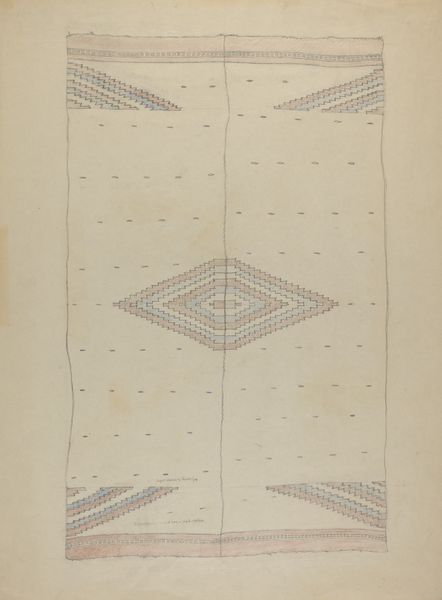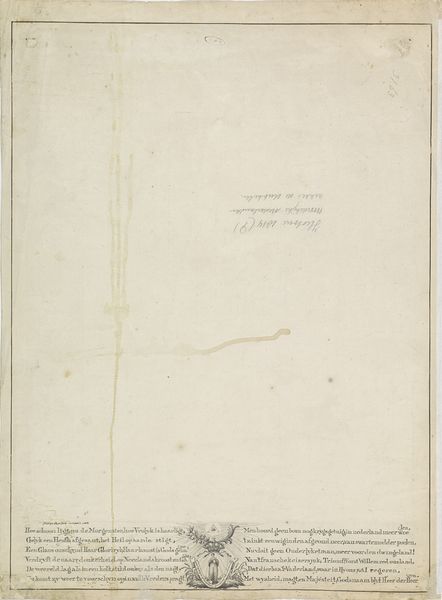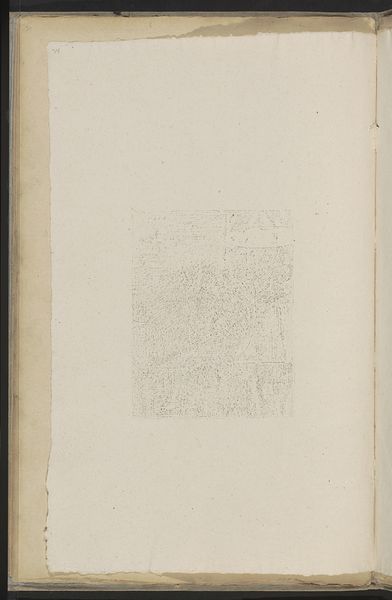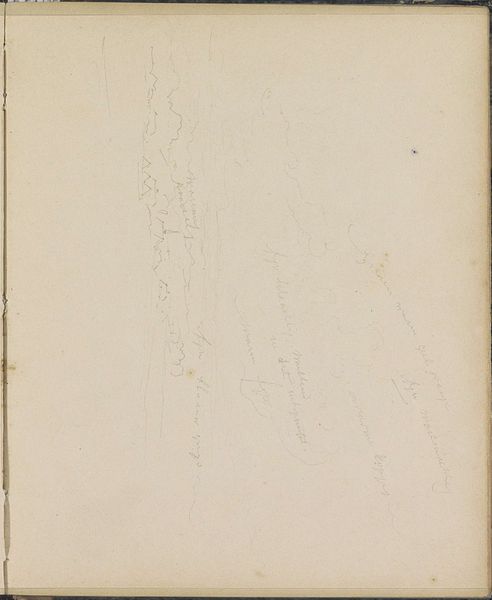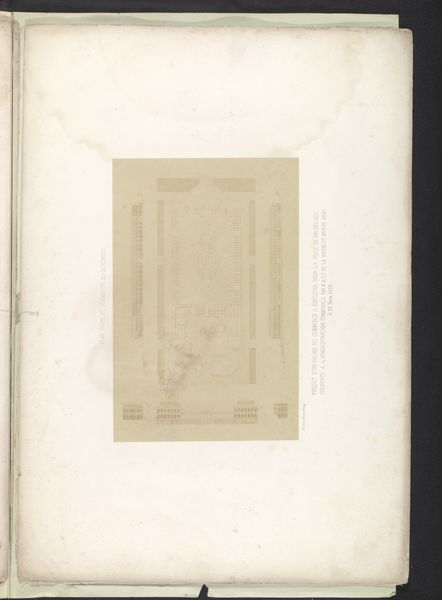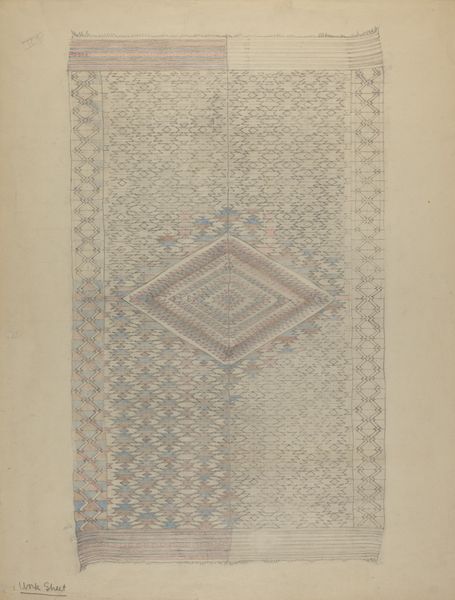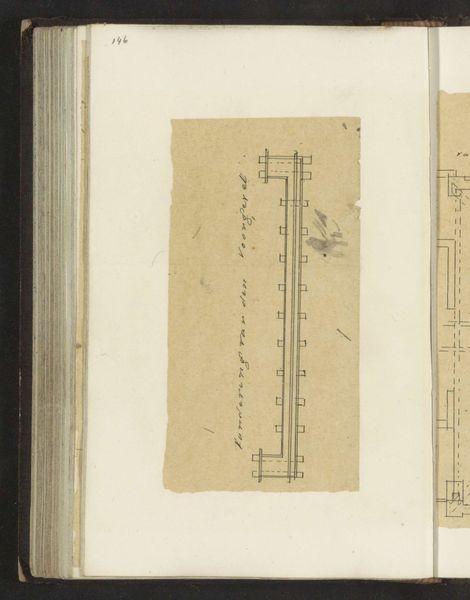
drawing, paper, pencil
#
drawing
#
paper
#
geometric
#
pencil
#
line
Dimensions: overall: 66.1 x 51.2 cm (26 x 20 3/16 in.)
Copyright: National Gallery of Art: CC0 1.0
Curator: This work, simply titled "Textile," dates from between 1935 and 1942, and it appears to be an anonymous design rendered in pencil and some red ink on paper. What’s your initial impression? Editor: The repetition of those geometric, almost floral, motifs is immediately striking. It has an ancient, ritualistic quality, like something unearthed from an archaeological dig. Curator: Precisely! Consider that textiles have always been integral to human survival and cultural expression. This drawing provides a crucial insight into how pattern and design informed daily life during that period. We see an intersection of planning and production. Editor: The motifs are interesting. They seem both abstract and figurative simultaneously – reminiscent of abstracted floral forms or maybe even stylized bird wings. It evokes a feeling of nature translated into cultural symbol. Did such patterns have a specific symbolic meaning in the cultures from which they emerged? Curator: That’s a crucial question. Though unsigned, the execution speaks to both functionality and inherent artistry. Notice how the horizontal bands divide the composition. We see rhythm and structure suggestive of the weaving process itself. Each section reflects stages of production, where the means becomes part of the end. Editor: Right, each of the motifs in these registers are also set in horizontal patterns, in alternating layers, emphasizing repetition, a visual representation of collective cultural values or shared symbolic vocabulary perhaps. It could reflect cultural memory, or act as visual mnemonics tied to historical events or mythological narratives. Curator: Furthermore, its existence on paper suggests a conscious effort to document and preserve this cultural knowledge. Editor: The very act of planning a textile design becomes a kind of symbolic gesture, then. It reinforces identity, doesn't it? What's intriguing to me is what such a piece was purposed for - its utilitarian value, perhaps a way to convey historical narratives? Curator: That resonates strongly. Studying "Textile" allows us to decode the underlying values assigned to functional objects of this kind. The relationship between aesthetic appreciation and essential labor is what remains compelling to this day. Editor: I agree. It leaves one wondering what stories these abstracted forms are meant to convey. Curator: The way it invites you into its symbolic depths truly exemplifies art and design in practice, then and now.
Comments
No comments
Be the first to comment and join the conversation on the ultimate creative platform.
